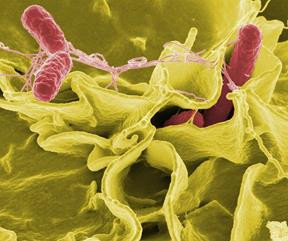Rates of infections of a recent Salmonella outbreak without any identified food orgin has more than doubled in more than a week.
The Centers for Disease Control has recorded a "significant" number of new reported sickness in the wake of a multi-state outbreak of the bacterial disease stemming from an unknown food source.
The outbreak has already left nearly 280 people ill and 26 hospitalized in 29 states, the CDC said.
A September 24 CDC update stated the outbreak strain of Salmonella Oranienburg was found in sample from a takeout condiment cup, which had lime and cilantro at the time of testing.
However, officials have not yet been able to pinpoint which of the soup's ingredients may have been the cause of the outbreak.
"Because multiple food items were present in the cup and in the sample that was tested, it's not possible to identify which food item has been contaminated," the CDC disclosed in a statement.
The CDC said they are using this information in relation to other available data to help narrow the list of possible foods linked to the outbreak.
Officials believe the number of people that have fallen ill is likely much higher since some of them recover from the infection without needing medical care and are not tested for the bacteria.
It can also take up to a month to find out whether someone has been exposed to a Salmonella outbreak.
Food contaminated with Salmonella does not usually smell or taste spoiled. Anyone can become ill with a Salmonella bacterial infection.
Children, seniors, and people with weak immune systems are at higher risk of developing serious sickness because their immune defenses are delicate, the CDC said.
Symptoms of of the bacterial infection include vomiting, diarrhea, stomach pains, fever and dehydration, the CDC added. Most people recover without medical intervention after four days to one week.
CDC representative Belsie González said it remains crucial that people immediately report symptoms to their healthcare provider and local health department.
The CDC recommends the practice of food safety measures like thoroughly cleaning utensils, hands and especially foods, and separating different foods items and making sure they are cooked to a high enough temperature. medical intervention after four days to one week.






